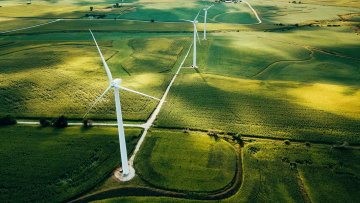As a member of Inogen Alliance, Charlie Quann, Energy & Carbon Services lead at Antea Group USA, shared his insights into the push for net-zero and how the challenge of hard-to-abate emissions is driving demand for emissions offsets.
Antea Group, denkstatt, and others collaborated with Environment Analyst to publish the insight report, Integrity at stake: Voluntary carbon offsets on the journey to net-zero.
About Environment Analyst
Environment Analyst is an international membership community for the environmental services space, built around market intelligence service. The insight report aims to explore why transparency, discipline, and quality are key to minimizing risk, maintaining integrity, and making a positive climate impact when utilizing carbon offsets.
Carbon Offsets and the Future of the Market
Along with being the Energy & Carbon Services Lead at Antea Group USA, Charlie specializes in helping companies set science-based targets, and other carbon reduction goals, as well as defining the initiatives and strategies that they want to implement to achieve those goals. When it comes to carbon offsets, a focus for Charlie is on quality along with the suitability of offsets for meeting stated commitments.
“Carbon offsets and voluntary carbon markets lead to an interesting discussion with clients because it is very dependent on where they want to go with their public messaging around this. So, a lot of our clients are committed to the Science Based Target initiative, which [currently] does not accept carbon offsets for scope one and two reduction at all. So, I have to advise a lot of my clients to avoid carbon offsets, because if they are committed to SBTi and they're purchasing carbon offsets that can be a reputational risk for them.”
For other clients, Quann explained, the voluntary carbon markets can be a stopgap, for example, if they can't achieve the renewables procurement they're hoping for, to allow them to get to carbon neutral until they can reach zero. In other cases, carbon credits can be helpful to offset a one-off event. In all cases, the very minimum companies should do is ensure they’re buying from a well-respected registry.

Margit Kapfer, head of decarbonization at denkstatt and member of Inogen Alliance, shared similar observations.
Advising clients on how to invest in offsets means being aware of the most promising opportunities and making sure that they have a long-term strategy: “you don’t just buy them for one year,” she said. Ideally, Kapfer added, the projects should be close to the purchaser; then the purchasing company can visit the project, have photoshoots, and tell the story of what they’re investing in and why. Transparent communications about how decisions have been made, and what goals are being met, are crucial for a company’s reputation, she explained.
As for the future of the market, Quann shares, “in the very long term, the voluntary carbon markets are going to have to become obsolete. In a world where carbon emissions are not part of our system, we won't need these kinds of mechanisms and that's very exciting. [The market] needs to be designed so that it doesn’t exist forever. If it does, we've missed the point.”
Read the full report on Environment Analyst here.
More on Carbon Reduction and Low Carbon Transition Plans
Now is the time for companies to adapt their organizations to the risk of climate change. A Low Carbon Transition Plan can help. Learn more about the elements of a low carbon transition plan and where you can start from our Antea Group USA carbon services experts, Charlie Quann and Allie Wiegel. in a video interview.
Watch the Full Interview HereWant more news and insights like this?
Sign up for our monthly e-newsletter, The New Leaf. Our goal is to keep you updated, educated and even a bit entertained as it relates to all things EHS and sustainability.
Get e-NewsletterHave any questions?
Contact us to discuss your environment, health, safety, and sustainability needs today.






